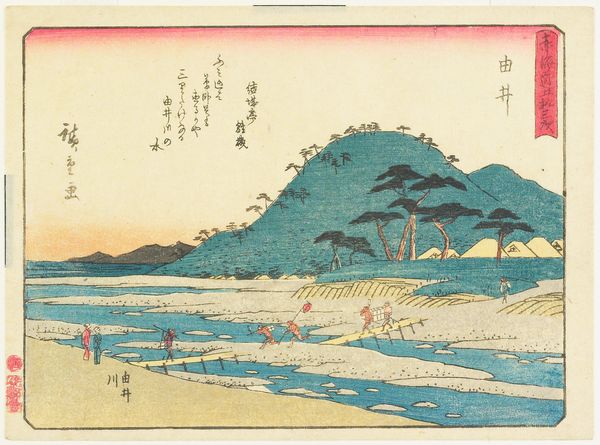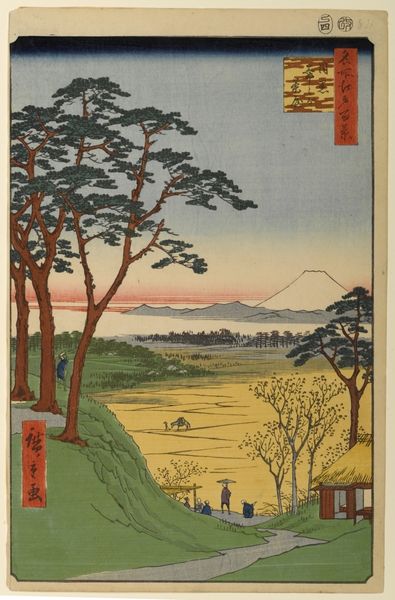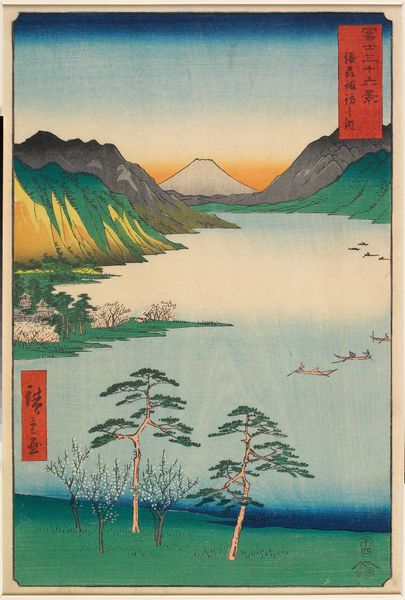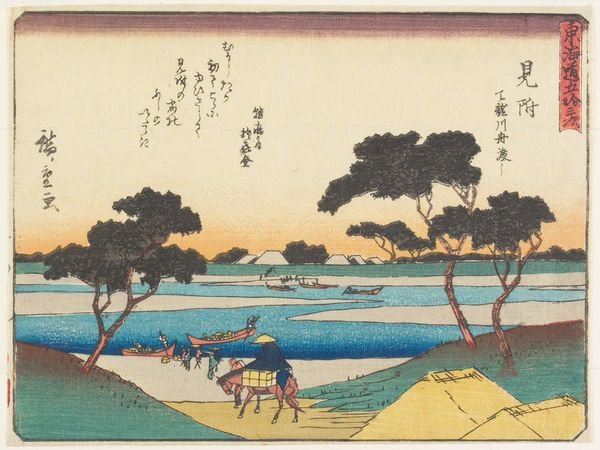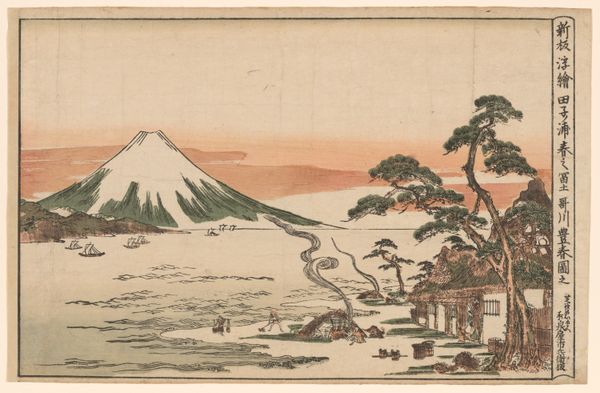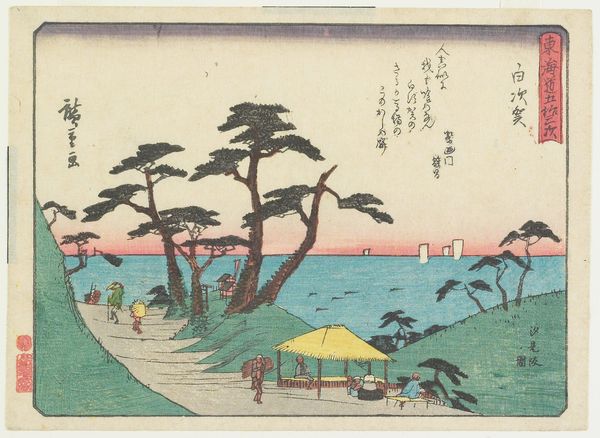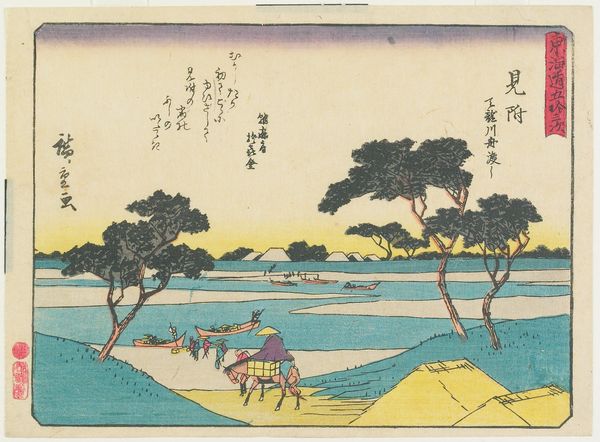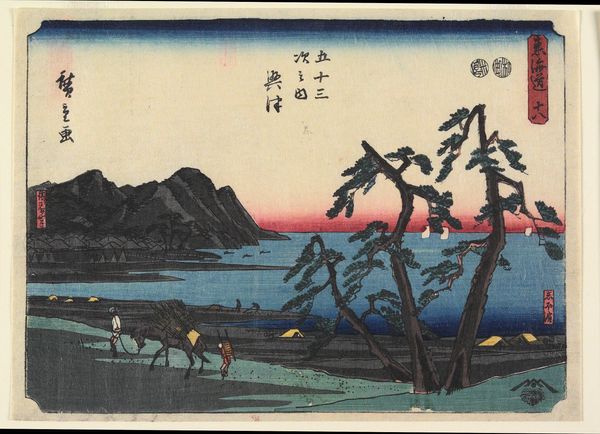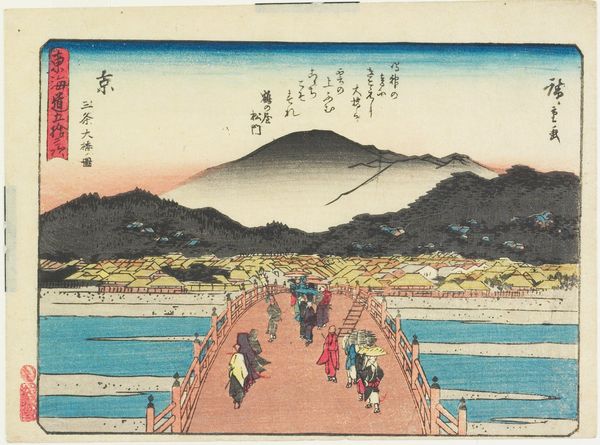
Dimensions: 7 15/16 x 12 9/16 in. (20.1 x 31.9 cm) (image)8 9/16 x 13 3/16 in. (21.7 x 33.5 cm) (sheet)
Copyright: Public Domain
Editor: This woodblock print, "Crossing Sakawa River in Odawara," created by Utagawa Hiroshige between 1841 and 1842, has such a unique texture! The layered colours create an almost dreamlike landscape. What stands out to you, focusing on its formal qualities? Curator: The composition compels the eye, doesn't it? Notice the sharp contrast between the flat planes of water and the imposing, vertically-oriented mountains in the background. This contrast serves to compress the spatial depth, creating a dynamic tension across the pictorial surface. And observe how the sinuous lines of the river guide our gaze, subtly disrupted by the jagged forms of the trees in the foreground. How do these formal elements contribute to the work’s overall structure, in your opinion? Editor: That's a fascinating perspective. I hadn't thought about the spatial compression like that, but I see it now. Do you think that tension is echoed anywhere else? Curator: Indeed. Consider the palette: the juxtaposition of cool blues and greens against the warm tones of the sky. These contrasting colours amplify the dynamism inherent within the composition. Further, the textured grain of the woodblock itself contributes to the overall tactile experience, reminding us of the artwork’s inherent materiality. The intentional use of line and form creates a sophisticated and captivating viewing experience, wouldn't you agree? Editor: Absolutely. It's amazing how analyzing the form reveals so much about the artist's intentions. I learned to see the formal structure in a new light today. Curator: Likewise. Paying attention to the intricacies of visual language, of the way shapes, colours and textures interact to create a coherent structure, reveals profound depths even in what appears to be a simple landscape print.
Comments
No comments
Be the first to comment and join the conversation on the ultimate creative platform.
